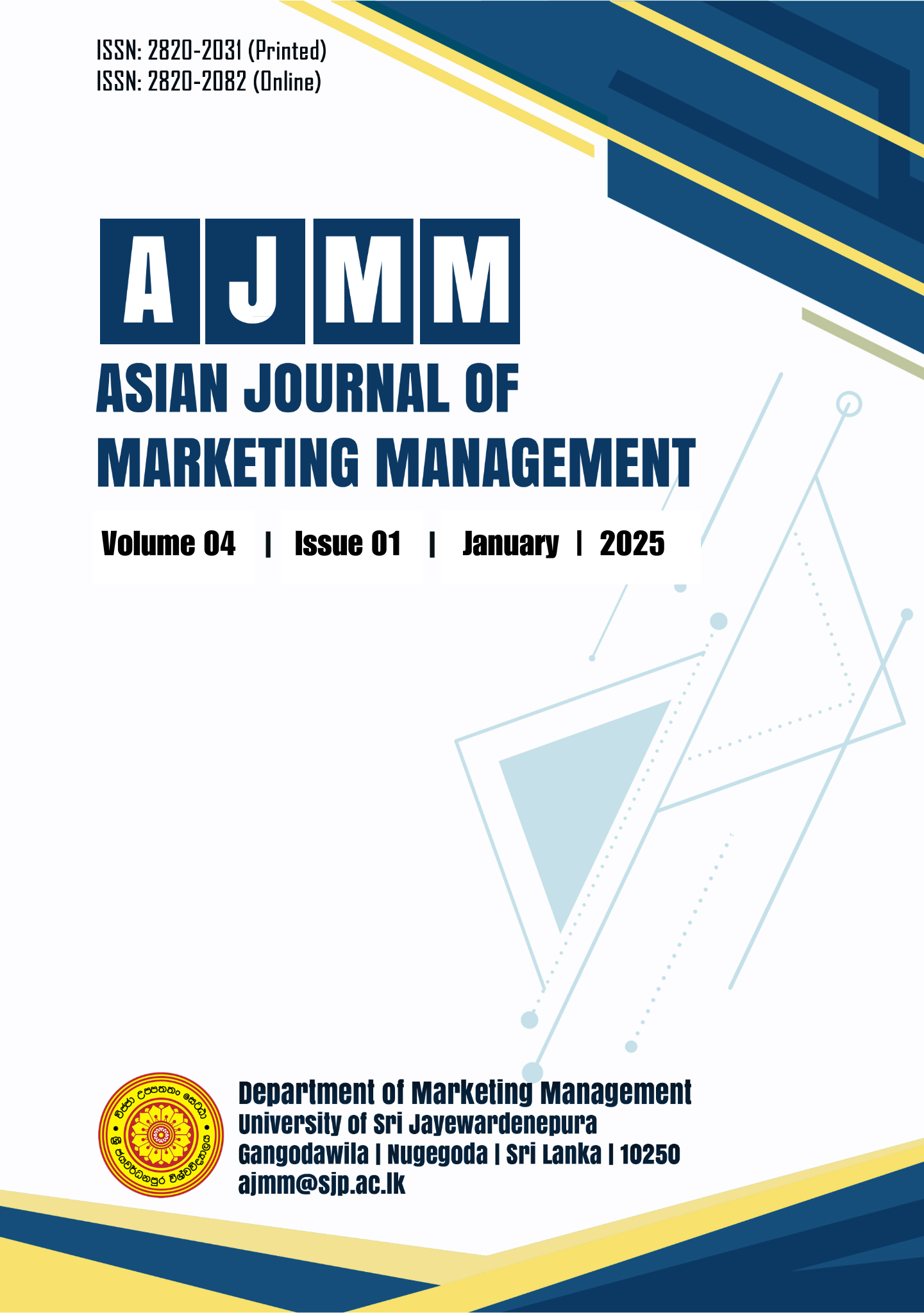How Does Immersion Affect the Travel Intention of Gen Z Tourists? The Mediating Role of Happiness
DOI:
https://doi.org/10.31357/ajmm.v4i1.7734Abstract
Purpose: Gen Z emerges as a dominant consumer group with unique travel preferences and therefore, understanding their behavior is crucial for developing targeted marketing strategies and enhancing tourism experiences. Yet, there is a significant research gap in the Sri Lankan context, particularly concerning the travel behavior of Gen Z tourists. Hence, this study examined the travel behavior of Gen Z tourists focusing on Immersion, Happiness, and Behavioral Intention in wildlife tourism. It also aimed to investigate the mediating effect of happiness between immersion and behavioral intention of wildlife tourists.
Design/methodology/approach: The study undertook a quantitative approach with a cross-sectional design. Self-administrated questionnaires (online) were distributed employing purposive sampling technique to domestic Gen Z tourists who had travel experiences in Wildlife National Parks in Sri Lanka. A total of 282 responses were analyzed by PLS-SEM approach using SmartPLS 4.0 software.
Findings: The findings revealed that immersion and happiness significantly affected the behavioral intention of Gen Z tourists whereas immersion significantly affected happiness. Additionally, this study proved that happiness partially mediated the relationship between immersion and behavioral intention of Gen Z tourists.
Originality: This research contributes to extending knowledge of tourism consumer behavior of Gen Zers in the context of wildlife tourism. Moreover, this study examined how a Gen Z tourist is immersed towards wildlife tourism consumption and their behavioral intention for such consumptions. Thus, it empirically contributes to broadening the understanding of comprehensive consumer behavior of Gen Zers that has been paid little attention in the national and global contexts.
Implications: These insights provide a deeper understanding of Gen Z tourists' travel behavior. The findings offer important practical implications for policymakers, and other decision-makers for planning and diversifying tourism offerings and capturing new and emerging market opportunities through value-added experiences.





